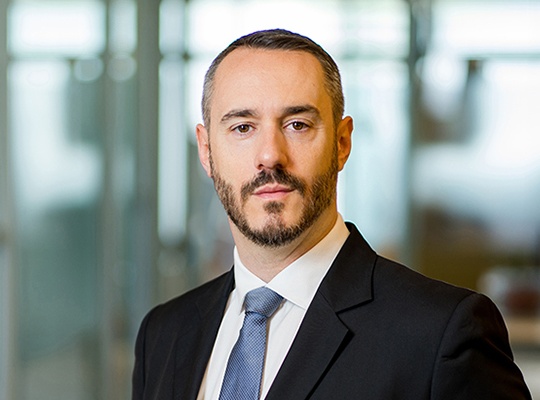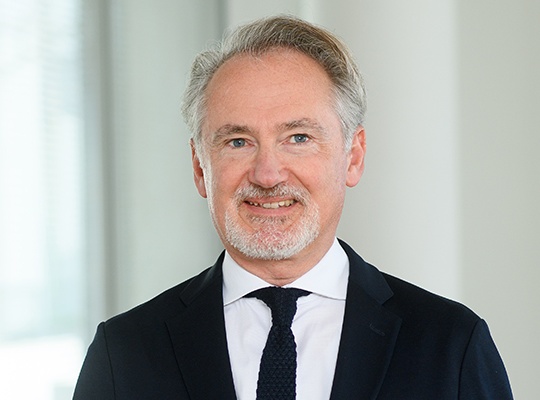ESG Snapshot: Overview of the EU Directive on the activities and supervision of IORP
What is IORP II?
Directive (EU) 2016/2341 on the activities and supervision of institutions for occupational retirement provision, widely referred to as IORP II,1 sets out minimum harmonization rules for financial institutions which manage collective retirement schemes for employers in order to provide retirement benefits to their employees (the scheme members and beneficiaries). Such schemes are private pension plans linked to an employment relationship (second pillar) and supplementary to (i) state-based social security pensions2, (first pillar) and possibly (ii) to any non-compulsory private pension savings by individuals3 (and not linked to an employee relationship – third pillar). ESG factors are important for the investment policy and risk management systems of IORPs and are discussed in more detail below.
Occupational pension funds were first regulated at European level by Directive 2003/41/EC, the directive on the activities and supervision of institutions for occupational retirement provision (IORPs). Under these rules, pension funds in one EU Member State can manage IORPs for companies based in another. Pan-EU companies can also have a single pension fund for all their European subsidiaries.4 IORP II is intended to improve the governance, transparency and help increase the cross-border activity of IORPs and thus strengthen the internal market.
Some 125,000 occupational funds operate across the EU. They hold assets worth €2.5 trillion on behalf of around 75 million citizens, representing 20 percent of the EU’s working-age population.5
IORPs will either typically appoint asset managers or insurance companies to provide them with tailor-made investment solutions for their portfolio or to invest in a variety of investment funds, be they undertakings for collective investments in transferable securities (UCITS) or alternative investment funds (AIF) for the benefit of their members or beneficiaries.
What is the ESG-related scope and impact of IORP II?6
The Recitals to IORP II are clear that environmental, social and governance (ESG) factors, as referred to in the Principles for Responsible Investment7, are important for the investment policy and risk management systems of IORPs. IORP II details that EU Member States should require IORPs to explicitly disclose where such ESG factors are considered in investment decisions and how they form part of their risk management system.8
Focusing on ESG-related requirements, EU Member States must ensure that IORPs:
- Have an investment policy to ensure that they invest prudently in the best long-term interest of members and beneficiaries (including by taking into account the potential long term impact of investment decisions on ESG);9
- Operate an effective governance system that provides sound and prudent management of their activities and that specifically includes consideration of ESG factors related to investment assets in investment decisions, and which is subject to regular internal review;10
- Are run by people with the suitable expertise, qualifications and knowledge;
- Have a risk-management system that covers ESG risks relating to the investment portfolio and the management thereof;11
- Document their own risk assessments and ensure that there is an assessment of new or emerging risks, including risks related to climate change, use of resources and the environment, social risks and risks related to the depreciation of assets due to regulatory change where ESG factors are considered in investment decisions;12 and
- At least every three years, carry out an internal risk assessment and provide a written statement of their investment policy principles (and set out how the investment policy takes into account ESG factors).
IORPs must provide prospective and actual members and beneficiaries of schemes with clear, accurate, updated information, free of charge. This includes, amongst other things, information on whether and how ESG and corporate governance factors are considered in the investment approach.
Depending on the requirements in question, EU Member States may exempt certain funds which operate pension schemes with fewer than 15 or 100 members from certain conditions of the legislation. In the event that a pension fund wishes to provide its services in other EU Member States, however, it has to apply all the rules laid down in IORP II.
What is the timeline?
IORP II came into force in January 2017 and EU Member States were required to transpose it into national law by January 13, 2019.13 IORP I was repealed from that date.
What are the key considerations for Asset Managers?
IORPs form an important part of asset managers’ investor and client base and – given the relatively extensive ESG reporting requirements to which IORPs are themselves subjected under IORP II14 vis-à-vis their members and beneficiaries – they will request (more comprehensive) disclosure of information on how ESG considerations are taken into account in the various investment decision making processes and offerings of the relevant asset manager.
IORPs will likely increase their demand for such information, given that asset managers will, as of March 10, 2021, be directly subjected to increased disclosure requirements under Regulation (EU) 2019/2088, as amended (the Sustainable Finance Disclosure Regulation15), which also applies to IORPs.
Footnotes
1) Directive (EU) 2016/2341 of the European Parliament and of the Council of 14 December 2016 on the activities and supervision of institutions for occupational retirement provision (IORPs) (recast) (OJ L 354, 23 December 2016, pp. 37-85), available here.
2) such as institutions operating social security schemes which are covered by Regulations (EC) No 883/2004 and (EC) No 987/2009 of the European Parliament and of the Council;
3) such as the pan-European Personal Pension Product (PEPP) Regulation (EU) 2019/1238 of the European Parliament and of the Council of 20 June 2019;
4) For more information, see: Revision of the Occupational Pension Funds Directive – frequently asked questions, press release (European Commission);
5) https://ec.europa.eu/commission/presscorner/detail/en/MEMO_14_239
6) The Shareholder Rights Directive (Directive 2007/36/EC) on the encouragement of long-term shareholder engagement (as amended by Directive (EU) 2017/828) also requires IORPs to monitor the ESG impact of their investments in their (shareholder) engagement policy as well as when assessing the performance of the directors any investee companies / companies of which they are a shareholders.
7) For more information, please see Overview of the Principles For Responsible Investment
8) IOPR II Recital (58)
9) On the basis of EIOPAs Opinion on the supervision of the management of environmental, social and governance risks faced by IORP (EIOPA-BoS-19-248), available here.
10) Article 21(1) IORP II
11) Article 25(2) IORP II
12) Article 28(2) IORP II
13) Cf. national implementation status, please click here.
14) and the Shareholder Rights Directive (cf. footnote 6)
15) For more information on the Sustainable Finance Disclosure Regulation, please see our article “Disclosure Regulation – what is it and who is impacted?”






